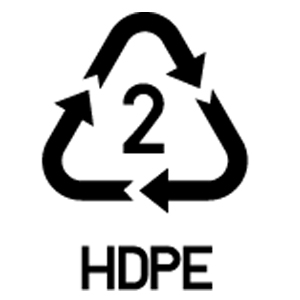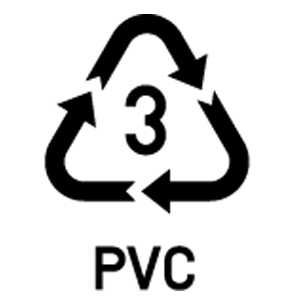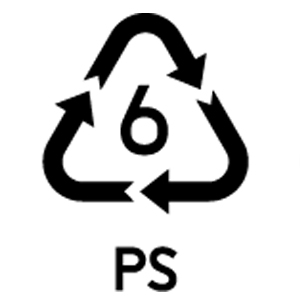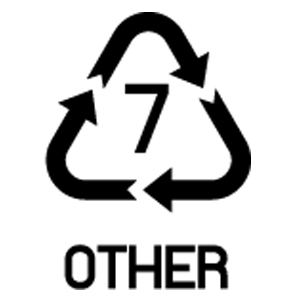All recyclable products fall into three main types of recycling – Primary, Secondary and Tertiary. We explain the process of each recycling process below and provide insight into the different stages with a focus on the tertiary recycling process highlighting the pros and cons of various plastics and materials at this level of recycling so you're equipped with accurate knowledge when purchasing your products.
What are the Stages Of Recycling?
Primary Recycling
Primary Recycling products and materials can be recovered and reused without altering their current state. They are mostly repurposed for the same use as they were created for. A common means of primary recycling initiatives in Australia and New Zealand are bottle buy-back facilities. These products are processed and cleaned at dedicated primary recycling facilities to be repurposed in their original form.
Secondary Recycling
Secondary Recycling products are repurposed without being reprocessed however they’re reused in a different way than they were initially intended. An example of this is egg cartons being used as plant seedlings or plastic, wood, and metals being used to build a product.
Tertiary Recycling
Tertiary Recycling products are chemically altered to make them reusable. They are sorted at a commercial facility and transported to appropriate reprocessing facilities to be re-created into material that is then sold to manufacturers.
How is Plastic Recycled?
Plastic is a form of Tertiary Recycling in most instances. Most plastics are generally recyclable. Others are recyclable based on your location due to local regulations and the availability of processing plants for these materials. Other forms of plastic cannot be recycled and there are strict council guidelines about the disposal of these products.
1 PE - Polyethylene Terephthalate

These are products like common food packaging and soft drink bottles. They are placed in recycling bins where they are taken to a facility to be recycled into plastic bottles and polyester fibres.
2 HDPE - High-Density Polyethylene

These are products like bleach, suncream, shampoo & conditioner bottles, and milk containers. They are placed in recycling bins where they are taken to a facility to be recycled into HDPE bottles and bags.
3 PVC - Polyvinyl Chloride

These are products like pipes and children's toys. DO NOT place these products in recycling bins. They are difficult to recycle and are considered one of the most hazardous consumer products. Items made from PVC should never be sent to landfills and cannot be placed in recycling bins either. PVC disposal is only available via specified contractors or at appointed council dumping facilities with advice about disposal recommended via your local city council.
4 LPDE - Low-density Polyethylene

These are products like garbage bags, sandwich bags and flexible materials like lids used on containers. They are placed in recycling bins where they are taken to a facility to be recycled into LPDE products.
5 PP – Polypropylene

These are products like clothing, ropes and bottles. They are placed in recycling bins where they are taken to a facility to be recycled into fibres to become more clothing or rope.
6 PS – Polystyrene

These are products like foam look containers and cups. DO NOT place these products in recycling bins and at the time of print, products containing this material are banned in most areas of Australia and New Zealand.
7 OTHER - All Other Plastics

These are products not specified above. DO NOT place these products in recycling bins as these products have detrimental impacts on the quality of recycling outputs at recycling plants.
In summary, any packaging containing codes 1, 2 & 5 can be recycled via a deposit into allocated council recycling bins. Any packaging containing codes 3, 4, 6 & 7 should be checked with your local council as recycling capabilities vary depending on your local regulations and the availability of recycling plants for these products in your area.
How is Wood Recycled?
Wood is a renewable resource that can be repurposed for many uses. Products made from wood can be repurposed for building materials or used as mulch for landscaping with some wood products able to be included in home compost bins as they are completely biodegradable based on their makeup of 100% natural products that have no impact when returned to the soil.
How Is Glass Recycled?
It is vital to keep glass out of landfills because it does not decompose as wood does. Glass is 100% recyclable and there are many facilities located throughout Australia and New Zealand in Buy-Back Recycling Programs to process and sanitise these (as in glass soft drink and alcohol bottles) for reuse in their original form.
Every part of glass can be reused without losing its purity or quality however, we must re-highlight they are a detriment in landfills. As a result, it is in the best interest of businesses (especially retail outlets and takeaway food providers) to encourage their consumers to participate in buy-back initiatives where possible to help the planet and take a stance in being eco-responsible.
What is Reward Hospitality doing to reduce landfill trash?
Reward Hospitality believes every business has a responsibility to positively impact each other, our communities, and the environment. To achieve this, we are actively committed to:
Reducing our ecological footprint and promoting environmental protection. We are working toward this by assisting our parent company, ECF Group, with an active initiative to support reforestation. Further to this our Asia Pacific Head Office, located at Yatala Qld, is a 5 Green Star certified building and we are reducing the environmental impact of the packaging used on our products by incorporating recyclable and environmentally friendly alternatives.
Offering eco-responsible products. In 2022, we launched the Earth Essentials eco-friendly range of products available now. This recyclable and compostable range of products is a step toward a better future for our planet while we continue to promote eco-friendly products provided by our extensive network of suppliers.
Reward Hospitality Asia Pacific is a proud member of APCO. As a proud APCO Member, we are committed to driving change in collaboration with the government and other corporate members to keep packaging materials out of landfills while retaining the maximum value of the materials, energy and labour within the local economy. We’re proud to be involved in this Collective to help facilitate changes to the way packaging is manufactured, used, collected and processed. We are dedicated, as part of this Collective, to deliver the 2025 National Packaging Targets stipulated by the Australian Federal Government and our effort will incorporate all of the Asia Pacific.
Want to get on board with Reward Hospitality’s initiative to reduce landfills?
The first step in this process is reviewing the thousands of products we have available in our catalogue. We feature everything you need to provide hospitality or food service (without the food) and we have a dedicated team of Territory Managers and customer service agents on hand to help you through the process.
You’re invited to shop online and purchase 24/7. Or you can set up an account with access to 30-Day Credit (for approved ABN/ACN holders) with many benefits. Why not sign up for our newsletters to receive regular updates about our special promotions and announcements, or join us on Facebook, LinkedIn, Instagram, and YouTube for the latest and greatest you'll want to know more.
“Our passion and dedication to servicing key industries throughout the Asia Pacific are at the forefront of our business strategy.”